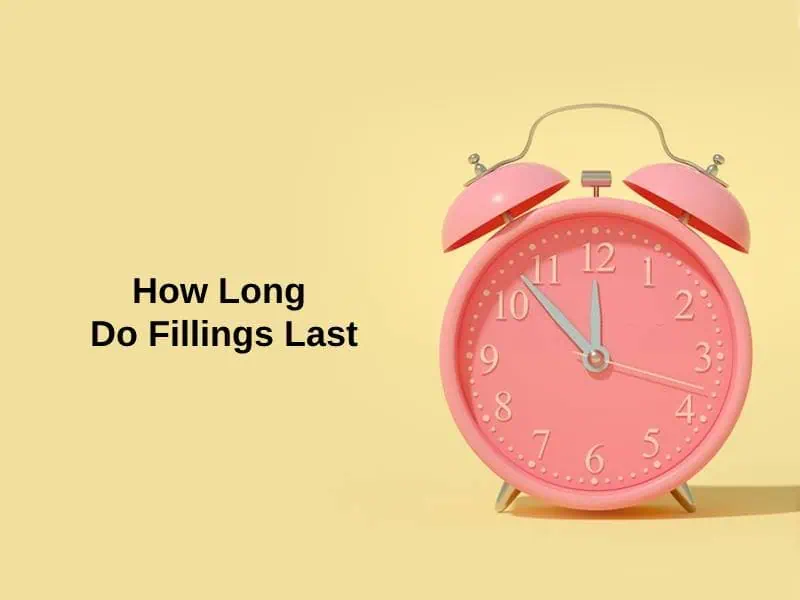Exact Answer: Up to 15 years
The process of filling is a painless dental procedure that restores damaged teeth. It takes only about an hour to get a filling. It not only stops tooth decay, but it also acts as a measure for the prevention of further tooth decay and cavity.
Small fillings require only about 20 minutes, but when multiple fillings are performed together it takes a little longer to get the job done. The time taken to perform a filling depends on several factors such as the materials, dental instruments, and the skills of one’s dentist. There are several materials and composites used in the preparation of a filling.
The different types of fillings based on the materials used include:
- Gold fillings
- Silver-color fillings
- White-tooth color fillings
- Glass ionomers fillings
- Porcelain fillings
The time taken for a filling to set in varies depending on the materials used in the preparation. Amalgam fillings take about 1 hour to set in, whereas, composite fillings and glass ionomers take only 2 to 20 seconds per layer to set in. Fillings do not take very long to heal after it has set in properly.

How Long Do Fillings Last?
The durability of fillings depends on several factors, but the materials used in it play the most important role in determining how long it will last. A filling can last for up to 10 years on average. If proper care and precautions are taken its durability can increase up to 15 years. Restoration and replacement procedures can also extend the lasting period of a filling.
Amalgam fillings
Amalgam fillings also called silver fillings, are a mixture of different metals such as silver, copper, mercury, and tin alloy. Such fillings are considered the most durable and least expensive fillings. They can last for up to 15 years with a high survival rate.
Composite fillings
Composite fillings are made out of acrylic and ceramic raisins that help them look white like their surrounding teeth. They are prepared as such that they chemically bond to their neighboring teeth with an adhesive. They can last for up to 7 years on average.
Ceramic Fillings
Ceramic fillings are made out of porcelain, that can last for up to 15 years. They are considered to be more expensive and the least found type of filling. Ceramic fillings require a machine gun or dental labs to be prepared, after which they are glued into the tooth.
Glass Ionomer
Glass Ionomer is made using glass and acrylic materials. It can be directly placed in the tooth without using any machine. Such a filling is used for small cavities near the gum line and can last for up to 5 years on average.
Gold Fillings
Gold fillings are very expensive but also highly durable. They require at least 2 sittings to be for into the teeth. They can last for up to 10 to 15 years on average.
In summary:
| Type | Durability |
| Amalgam fillings | 15 years |
| Composite fillings | 7 years |
| Ceramic fillings | 15 years |
| Glass Ionomer | 5 years |
| Gold fillings | 10 – 15 years |
Why Do Fillings Last So Long?
Fillings can last for a long period depending on the materials or metals used in their preparation. The durability varies depending on the characteristics of metals used such as their strength, durability, etc. The type of material in one’s fillings depends on the size of the hole and the severity of the tooth decay.
Amalgam fillings can last for 15 years or more because of the presence of durable metals that can withstand strong forces. Similarly, gold fillings contain gold which has good durability with low susceptibility to erosion. Composite fillings are comparatively versatile and are used to repair front teeth.
Composite fillings contain porcelain that is made out of silicon and oxygen. They can last for more than 7 years with a structure of non-crystalline glass that increases its durability. Other factors that influence the life span of fillings include:
- Eating habits
- Dental hygiene
- The severity of tooth decay
- Tooth decay around filling
Conclusion
The filling is a common dental practice that is performed to fill holes caused by cavities. It is also done to prevent further tooth decay and associated pain. Its lasting duration mainly depends on the type of dental filling used during its preparation.
The average life span of a filling can be anything between 5 to 15 years. Glass Ionomer and composite fillings have lower durability compared to gold or ceramic fillings. Other factors such as lifestyle, dental health, the severity of tooth decay, etc also have an impact on the lasting period of fillings.